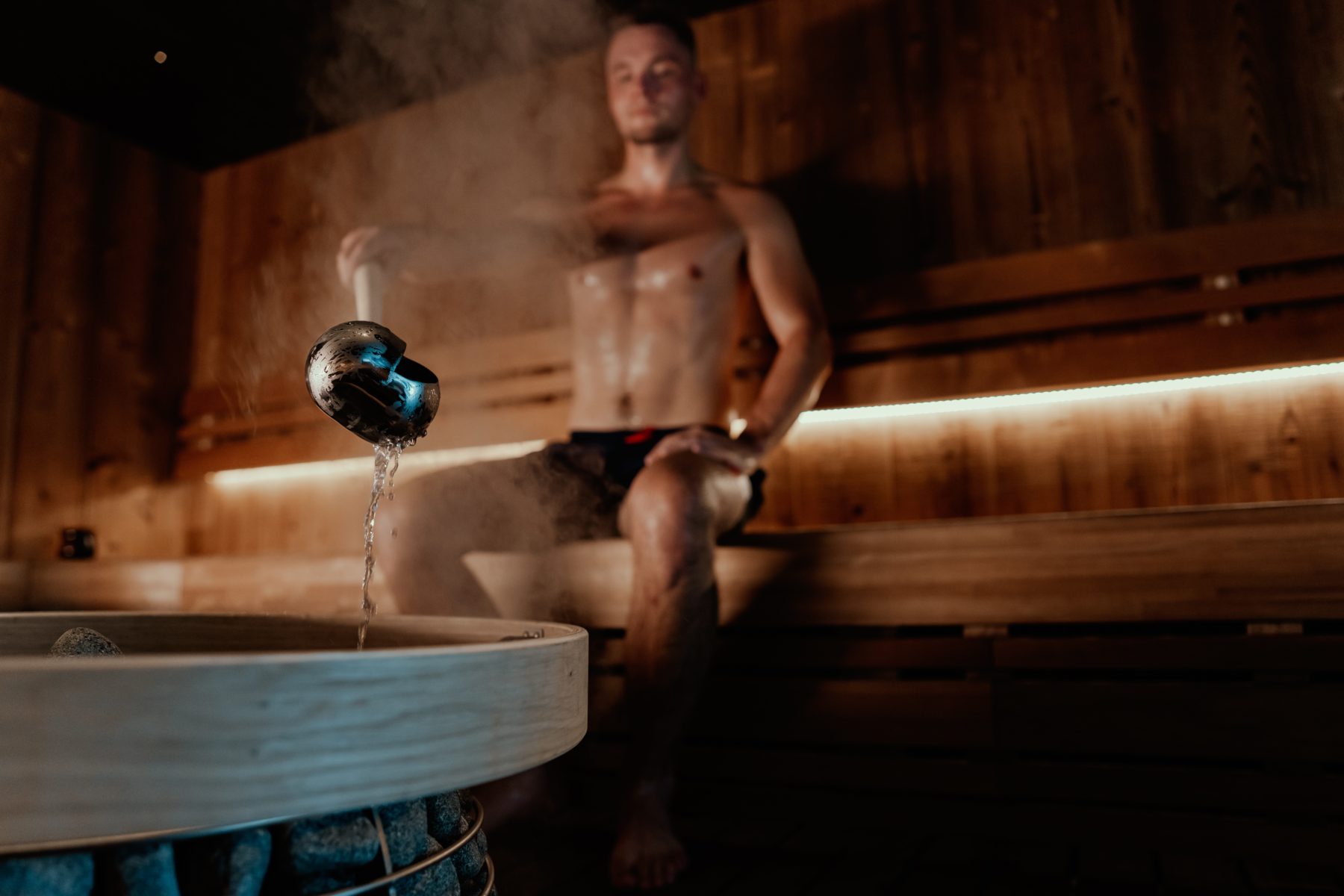If you are an athlete or using contrast therapy to improve performance, you have no doubt wondered if you get more benefits by using the sauna before or after workout sessions. Well, we’re here to help you optimize your sauna sessions for the best results.
It’s ideal to use the sauna after your workout rather than before and we’ll tell you why below.
This is according to Huberman Lab Protocol #3, which is designed to maximize growth hormone release. This is all backed up by research by Dr. Rhonda Patrick, and elite athlete (and former NFL player) Brian Peters of the Chasing Edges Podcast.
Speaking of chasing edges, if you’re not including a sauna (and cold plunge, but more on that later), you will be at a disadvantage:
Post-exercise sauna bathing for 3 weeks induced heat acclimation adaptations and improved exercise performance including 𝑉O2max, running speed, and time-to-exhaustion more than endurance training alone.
Dr. Rhonda Patrick
Let’s dive into why it’s best to sauna after a workout, rather than before.
1. Preventing muscle fatigue
When you use the sauna before a workout, you risk experiencing muscle fatigue and dehydration. This can negatively impact your exercise performance and reduce the effectiveness of your training session. By opting for a post-workout sauna session, you can minimize these risks and ensure a more productive workout.
2. Enhancing muscle recovery
Another advantage of using the sauna after your workout is improved muscle recovery. The heat from the sauna increases blood flow and promotes the removal of metabolic waste products. This process can help reduce post-exercise muscle soreness and speed up your overall recovery time.
3. Boosting growth hormone release with a semi-fasted state
Protocol #3 suggests that using the sauna in a semi-fasted state (not having ingested food for 2 to 3 hours prior) can help maximize growth hormone release. Since exercising on an empty stomach isn’t ideal, it makes more sense to schedule your sauna session after your workout, giving you enough time to reach a semi-fasted state.
4. Maintaining workout intensity
If you use the sauna before a workout, the heat exposure and the effects of the protocol might compromise your ability to maintain the intensity of your training. By scheduling the sauna session after your workout, you can ensure that you maintain the desired intensity throughout your exercise session.
How to get the most out of Protocol #3
To maximize the effectiveness of Protocol #3 for growth hormone release, follow these steps:
- Complete your workout.
- Wait for 2 to 3 hours after your workout to reach a semi-fasted state.
- Begin your sauna session, following the suggested protocol (30 minutes in the sauna, 5 minutes cool off, repeat for a total of four 30-minute sessions).
- Incorporate deliberate cold exposure during the rest periods, as suggested, to further increase metabolic gains.
Keep in mind that this protocol is designed to be used infrequently (once per week or less) to ensure maximum effectiveness for growth hormone release. By incorporating these guidelines into your fitness routine, you can make the most of both your workouts and sauna sessions.
Sauna Specs for Optimal Performance
Studies showing the benefits of sauna for athletes, including those mentioned above were done using traditional Finnish saunas that reach temperatures of 180 degrees f and above. A sauna used for recovery should have rocks that can be splashed with water to create steam.
Infrared saunas may provide benefits but they do not have as much research behind them. That’s why most strength coaches and trainers recommend traditional Finnish saunas.
Q. I’m just skimming this and I missed it, should I sauna before or after workout?
Sauna after your workouts. It’s not even close.
Additional Performance Hacks
Jumping in the sauna after a sauna is a great way to get ahead of your competition, and knowing about it is almost a superpower. Here are some other ways to get edges as an elite athlete:
- Cold plunge: Cold water immersion or cold plunge can help reduce inflammation, improve circulation, and speed up recovery. Many athletes use cold plunge therapy after intense workouts or competitions to alleviate muscle soreness and promote faster healing. Read about the sauna cold plunge routine here.
- Breathing techniques: Various breathing techniques, such as diaphragmatic breathing, box breathing, and Wim Hof method, can help athletes improve lung capacity, reduce stress, and enhance focus. Incorporating these techniques into their daily routine can provide both physical and mental benefits.
- Periodization: Many athletes follow a periodization training program, which involves systematically varying their training intensity, volume, and focus to optimize performance and prevent overtraining. Periodization helps athletes peak for specific competitions while also allowing for sufficient recovery.
In conclusion, incorporating sauna sessions into your athletic routine can significantly improve your performance and recovery no matter if you sauna before or after workout sessions. Based on the research and expert opinions from Dr. Rhonda Patrick, Brian Peters, and the Huberman Lab Protocol #3, it is clear that the optimal time for a sauna session is after your workout rather than before.
By following the outlined protocol and combining it with other performance hacks like cold plunge therapy, breathing techniques, and periodization, you can unlock your full potential as an elite athlete.
Understanding the benefits of using a traditional Finnish sauna and incorporating it into your fitness regimen is a game-changer. Remember to use these methods wisely and infrequently to maximize their effectiveness. With these tools in your arsenal, you’ll be well on your way to gaining a competitive edge and achieving peak performance in your athletic endeavors.
Lead Image: HUUM

 Minnesota
Minnesota